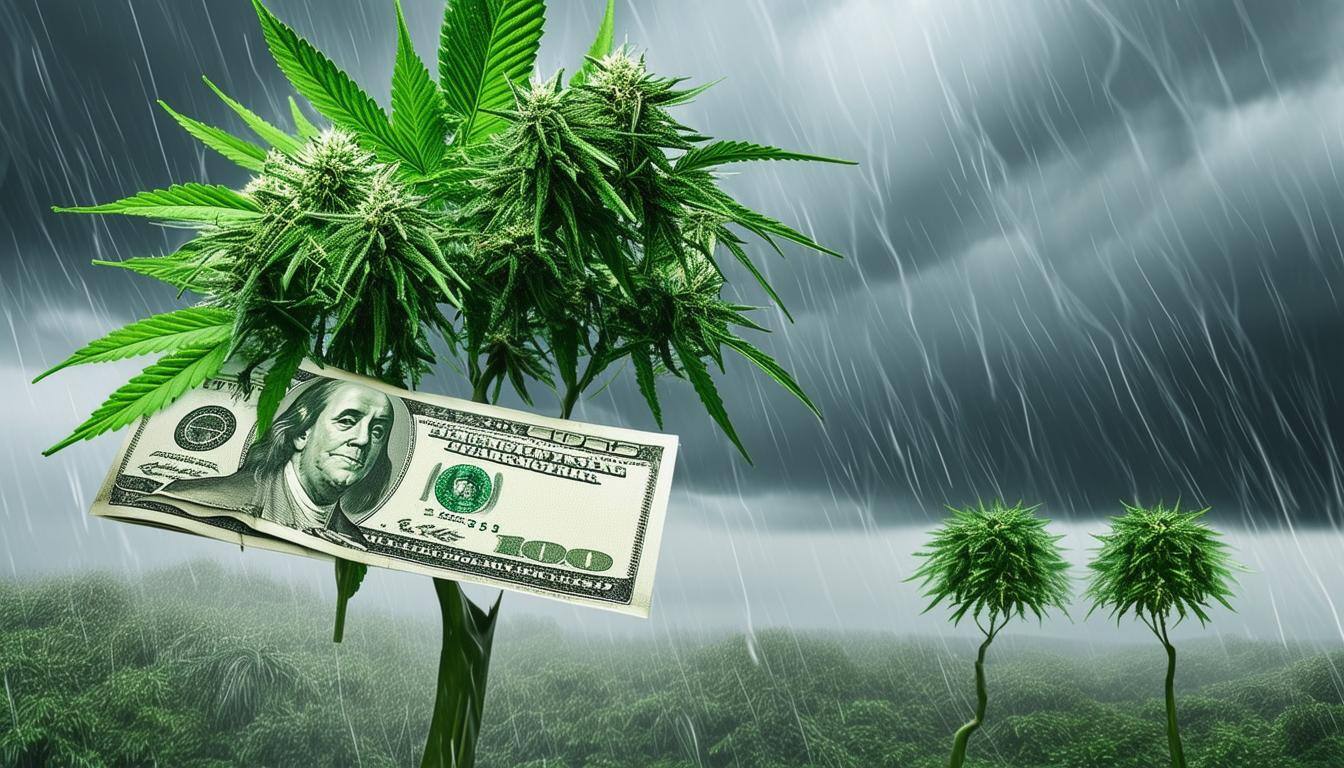California flower price impacts to be expected in the coming months with flooding conditions
Cannabis flower prices are notoriously volatile, often oscillating from a “drought” - wherein buyers can’t source enough whole flower, trim, or biomass and prices spike - to a “flood" as licensed and unlicensed growers chase higher prices and eventually oversupply the market. This cycle usually repeats every 2-4 years. California cultivators that have been growing for many years have seen a few of these cycles and know how to navigate between the peak and the trough. But what happens when there is a literal flood impacting grow operations?
As we write this from HQ in San Diego, we are awaiting heavy rains from the third or fourth pineapple express this season. Our neighbors to the north in LA County are getting slammed with 4-8 inches of rain today as downtown LA just had its tenth wettest day in the city’s long history yesterday. Further north in cannabis-rich Ventura and Santa Barbara Counties, there have been flash floods all weekend. This is on top of several major storms have already struck since the rainy season began in October.
How bad is this for cultivation? Floods pose severe threats to cannabis cultivation:
- Dense flowers are susceptible to too much moisture which can cause problems from mold and fungus and may lead to crop losses.
- Sun-grown cannabis flowers don’t get as big or ripen as quickly in low light and laborers may have a hard time working effectively in wet conditions.
- Logistics problems are a sure thing with extreme California weather.
- Taken altogether, the net effect of these extreme weather effects is likely to be an undersupplied marketplace.
True mixed light greenhouses tend to shrug off poor weather conditions with hardened steel structures and polycarbonate glass that protect crops, and provide additional environmental controls like dehumidification, room heaters, and supplemental lights. Indoor growers are largely immune from weather impacts altogether (except for the occasional roof leak, power outage, AC failure, or flooded floor).
Market participants know that if supply is diminished and demand rises, we can expect price increases. The impacts are felt downstream from the cultivator at the wholesale and retail levels. Retailers in particular may have a hard time passing on cost increases to price sensitive shoppers - many of whom are already shopping in the sun grown category for the highest value. Is demand rising? We think so, especially in the value segment.
Pac Garden believes that the 2024 El Niño, along with ongoing shifts towards a warmer and more humid climate, signifies a sustained trend that demands cultivators plan for the unexpected. Extremes between droughts and floods - both literal and figurative - will continue to impact flower quantity and quality, and ultimately price. While the exact impact of the current weather patterns on the upcoming spring 2024 planting season remains uncertain, the reduction in licensed growers, particularly in prominent cultivation areas like the Emerald Triangle, suggests an inevitable upward trajectory for flower prices, not just throughout this winter but potentially extending into the fall.
Stay safe and dry, California!

Comments